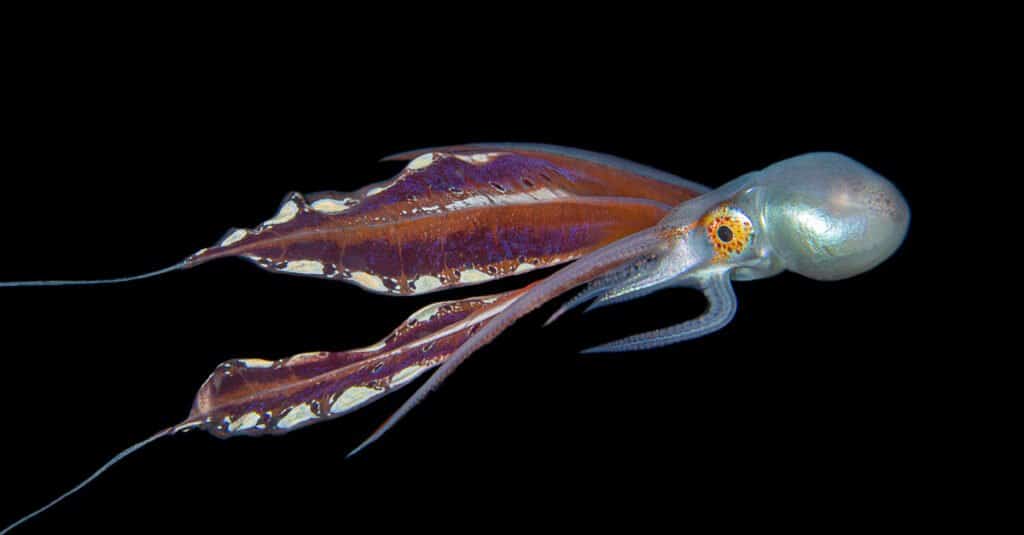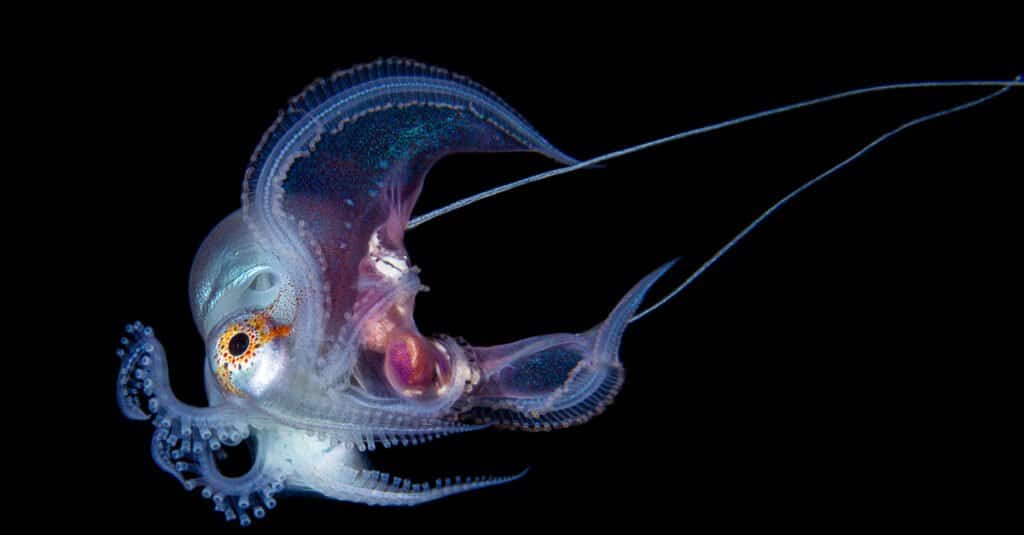Males and females in many species are often unique. They possess distinct reproductive organs and even exhibit sexual dimorphism, a difference in appearance or size. Some species of animals have more apparent forms of sexual dimorphism than others. For example, the sex of a housecat is hard to discern at a glance, but primates are simpler. That brings us to the poorly studied octopus. How are male vs female octopuses different?
That’s the question we’re going to answer today. Given the information about octopuses, we’ll show you three ways males and females can appear unique in some cases. Without further ado, let’s explore the difference between male and female octopuses.
Comparing a Male Octopus and a Female Octopus
The Key Differences Between a Male Octopus vs Female Octopus

Sam Robertshaw/Shutterstock.com
The most significant differences between a male and female octopus can be found in their size differences, sexual organs, and their behaviors after reproduction. Male octopuses are sometimes smaller than their female counterparts; the size differences can be incredible. A male blanket octopus is about the size of a walnut, while a female can measure over 6 feet in length. Furthermore, the females of that species weigh thousands of times more than the males.
Male octopuses have a hectocotylus, a specialized arm used to introduce sperm to females with a unique structure compared to its other seven arms. Meanwhile, females have an oviduct that receives and stores sperm under their mantle.
Male octopuses often die after reproduction, either through sexual cannibalism or through the natural process of senescence. Females live long enough to stand guard over their eggs before they die. Although males and females are short-lived compared to many other species, females tend to live longer than males.
These are the main differences between male vs female octopuses. Still, we’ll dig a little deeper into these differences below.
Male Octopus vs Female Octopus: Sexual Dimorphism and Size
The most discernable cases of sexual dimorphism in octopuses result in noticeable size differences between males and females. One such case is found in the blanket octopus from the genus Tremoctopus.
The males of these species measure about 1 inch in length, while the females can reach over 6 feet in length. Females can weigh about 40,000 times more than males! Not only is this one of the best examples of sexual dimorphism of all octopuses, but it’s also one of the largest in the animal kingdom. Thus, the size difference in some species of octopus can be used to differentiate the creatures.
Male Octopus vs Female Octopus: Morphology

Sam Robertshaw/Shutterstock.com
Many octopuses have eight arms, a beak on the underside of their body, suckers on their arms, and a bulbous head. However, that’s not a great way to differentiate males and females.
Examining a male vs. female octopus’s unique qualities often boils down to their reproductive organs. When you see an octopus, try to explore the third arm on its right side. If it has suckers running up and down the arm’s length, it’s probably a female. If not, then it’s probably a male.
That specialized arm without suckers on a male is called a hectocotylus. This specialized arm can store spermatophores and introduce them to females. The male can use this arm in a few ways. For example, the arm can be analogous to a penis and introduce the spermatophores directly to females’ oviducts in the mantle. Otherwise, the male can remove its hectocotylus and present it to a female.
These are significant differences between males and females, but we have one final dimension to examine.
Male Octopus vs Female Octopus: Post-Reproduction Behavior
Male and female octopuses behave very differently in the time after reproduction. Females may engage in sexual cannibalism, consuming their mate for sustenance following copulation. That doesn’t happen all the time. Either way, there is no happy ending for the male octopuses. If they manage to dodge becoming dinner, they still enter a period of senescence where they die in the following weeks.
Females stick around longer, often several months. However, they are entirely focused on protecting their fertilized eggs. Female octopuses will place the eggs in areas that are hidden from sight, like beneath rocks. The females guard these strings of thousands of eggs for months without feeding, fighting off the numerous predators that try to feast on the eggs.
Once the eggs have hatched, or the female is exhausted, she will also pass away.
These differences between male and female octopuses are neither numerous nor easily spotted. Octopuses remain some of the least-studied animals in terms of reproduction due to their elusiveness in the wild. Still, we hope the future reveals more information so we can update this article and show you other ways to differentiate male and female octopuses.
Up Next:
- Blanket Octopus vs Anglerfish: What’s the difference?
- Octopus vs Squid: 8 Key Differences Explained
- Octopi vs Octopuses: The Definitive Answer To The Plural Octopus
- Shark vs Octopus: Who Would Win in a Fight?
The post Male vs Female Octopuses: How Are They Different? appeared first on AZ Animals.
from Animal News, Facts, Rankings, and More! - AZ Animals https://ift.tt/YABSQri